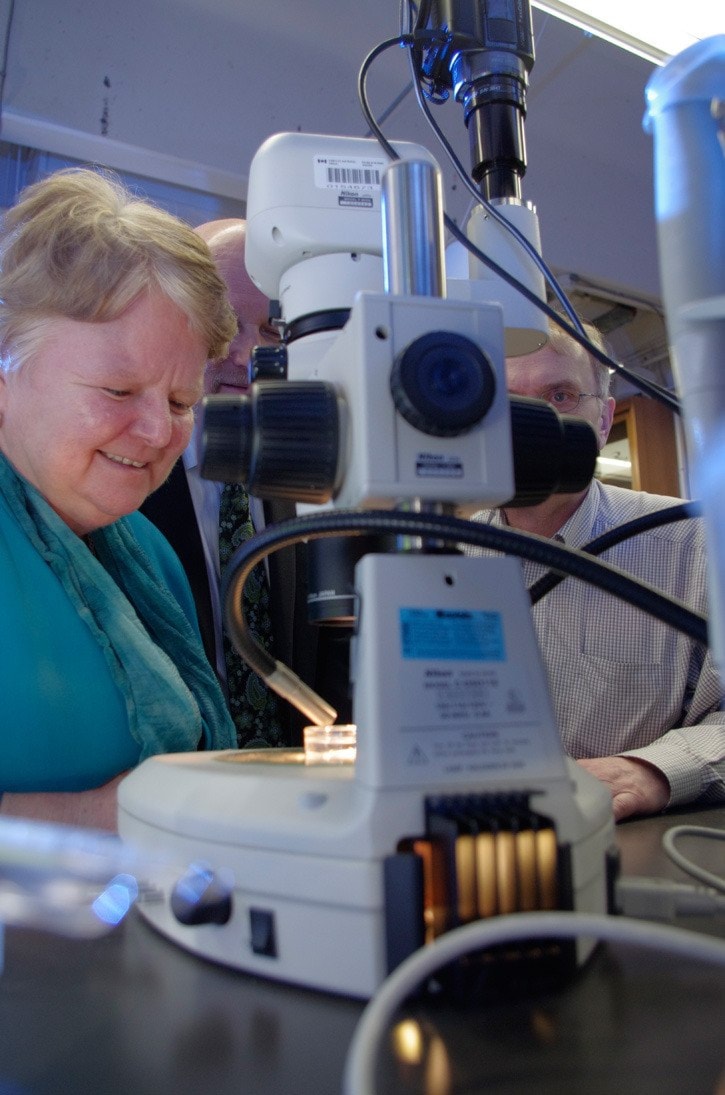Budget-minded researchers at Pacific Biological Station will be able to concentrate more on science and less on cash crunches over the next few years.
Gail Shea, federal minister of Fisheries and Oceans Canada, stopped by the research facility with Nanaimo-Alberni MP James Lunney Friday to announce the federal government has committed $54 million over the next five years to continue Canada’s Sustainable Aquaculture Program.
The money is intended to help provide a scientific foundation to bolster Canada’s aquaculture industry and maintain ecologically sustainable operations.
“I’m very proud of the advice that comes out of the Pacific Biological Station and other research facilities across the country,” Shea said to the station’s staff during her presentation speech. “Your work continues to be important in the sustainable management of all our oceans’ resources and, of course, informs all of my decisions, including the aquaculture industry of Canada.”
Aquaculture now supplies more than 50 per cent of fish and other seafood consumed world wide.
It is the fastest growing food production system and product demand continues to rise.
Canadian aquaculture produces 174,000 tonnes of products and $2 billion annually.
In 2012 it accounted for 16 per cent of Canada’s total seafood production.
Aquaculture supports 14,000 jobs in rural areas and provides increasing employment for aboriginal communities with about 50 First Nations currently involved with aquaculture and related industries according to government statistics presented Friday.
Shea said the industry is helping provide employment stability in communities that previously relied on forestry, mining and natural fisheries.
About 5,700 people work in agriculture in B.C., which is Canada’s highest producing province of farmed fish products.
“Comox Valley, for example, has over 20 producers growing more than $7.5 million worth of oysters each year,” Shea said.
Up to $27 million of the total announced funding will be directed to gain knowledge through scientific research, operational analyses, risk assessment and scientific peer-reviewed advice to work toward regulatory reform and improved reporting of industry issues. Investigating wild and farmed salmon diseases and interactions between wild and farmed aquatic resources, for instance, will help to monitor and develop mitigation options for the release of organic nutrients from aquaculture sites.
Better understanding long-term cumulative effects of salmon farming on the ecosystem could lead to streamlining regulations. Salmon farm licensing periods, for example, could be extended from one year to several years at a time.
“I just want to be clear, when I say streamline regulations, it doesn’t mean in any way that our system will be less rigorous,” Shea said. “We recognize that in some cases the regulatory regime is inadequate, cumbersome and may create confusion and conflicting direction to the industry.”
Shea said the fisheries and oceans ministry could do a better job of coordinating and cooperating with other federal departments and agencies.
The Program for Aquaculture Regulatory Research has funded more than 50 research initiatives since 2008.
